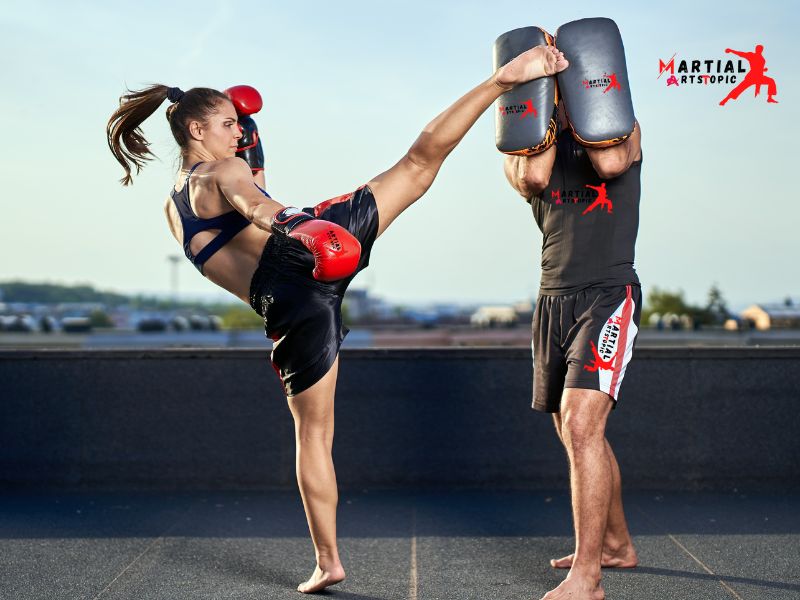
What is Sanda?
What is Sanda? Exploring the Definition, Variations, and Key Characteristics Sanda, also known as Sanshou or Chinese Kickboxing, is a popular and dynamic Chinese martial art that combines elements of traditional Chinese boxing (Sanda) and full-contact kickboxing (Sanshou). In this blog post, we will dive into the definition, variations, and key characteristics of Sanda while shedding light on its rich history and cultural significance.
Definition and meaning of Sanda
We can define Sanda as a Chinese martial art that focuses on striking techniques, throws, sweeps, and takedowns, making it a highly versatile and practical combat system. It emphasizes the use of punches, kicks, elbows, knees, and throws to subdue opponents effectively. We know Sanda for its explosive movements and quick transitions between striking and grappling techniques.
Different names and variations of Sanda in various regions
While Sanda is the most commonly used term to describe this martial art, it is worth mentioning that it has different names and variations in various regions. For instance, in the Guangdong region of China, they referred it to as “Gwóu Lèui” or “Chinese Boxing.” In Taiwan, they know it as “Tǎn Tuǐ” or “Spring Legs,” emphasizing the use of powerful kicks. These regional variations add cultural diversity and richness to the practice of Sanda.
Key characteristics and principles of Sanda
- Stand-up combat: Sanda primarily focuses on stand-up fighting techniques, enabling practitioners to develop their striking skills through rigorous training. Punches, kicks, knees, and elbows are key components of Sanda’s stand-up combat.
- Throws and takedowns: someone trained extensively Sanda practitioners in throws and takedowns, allowing them to take control of their opponents by utilizing their body mechanics and leverage. These techniques are effective in both offensive and defensive situations.
- Practical self-defense: Sanda’s emphasis on realistic combat situations and practical self-defense techniques makes it a popular choice for those seeking to learn effective self-defense skills. The training covers a wide range of scenarios, preparing practitioners for real-world encounters.
- Conditioning and fitness: Sanda training incorporates intense physical conditioning, ensuring practitioners develop strength, endurance, speed, and agility. It is a demanding martial art that requires discipline and dedication.
- Competitive sport: Sanda has gained recognition as a competitive sport, with various international competitions and championships held worldwide. It combines the excitement of full-contact kickboxing with the technicality of traditional Chinese martial arts, making it an engaging spectator sport.
Importance and Popularity of Sanda
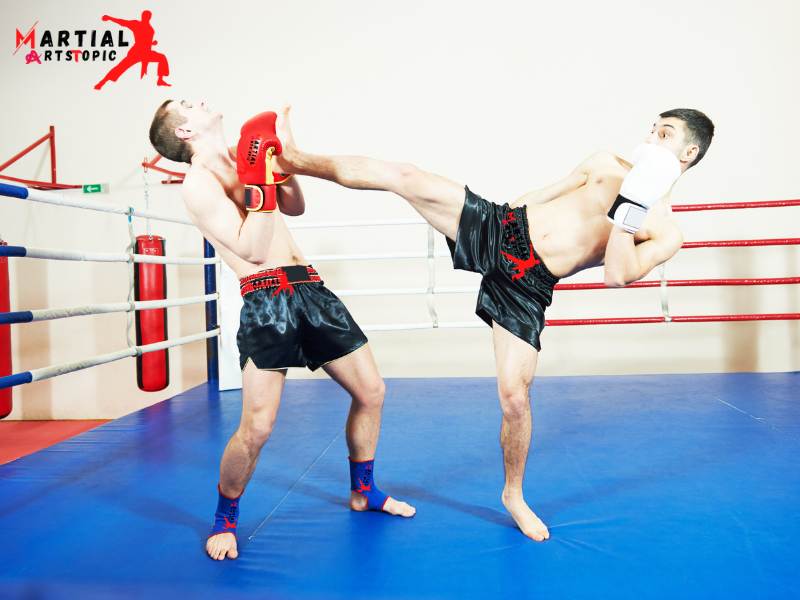
Sanda has gained significant popularity both in China and around the world because of its effectiveness as a combat sport. Its combination of striking and grappling techniques makes it a well-rounded martial art, suitable for self-defense, competitive fighting, and overall physical fitness. Sanda competitions, often held in a ring similar to those used in boxing and kickboxing, draw large audiences and showcase the athletes’ skills, strength, and agility.
The rising popularity of mixed martial arts (MMA) has also contributed to the increased interest in Sanda. Many MMA fighters incorporate Sanda techniques into their training, recognizing its practicality and effectiveness in close-quarters combat scenarios.
Origins and History of Sanda
What is Sanda? Exploring the Origins and History of this Ancient Chinese Martial Art Sanda, also known as Chinese Kickboxing, is a dynamic and exciting martial art that has a rich history dating back centuries. In this blog post, we’ll delve into the origins of Sanda, its evolution from ancient Chinese martial arts, and the influences and contributions that have shaped this popular combat sport.
Ancient Chinese martial arts: The Roots of Sanda
To understand the origins of Sanda, we must first look at the ancient Chinese martial arts that laid the foundation for this powerful and versatile combat style. China has a long history of developing martial arts systems, with records of various styles dating back more than 4,000 years.
They developed ancient Chinese martial arts as a means of self-defense, military training, and promoting physical and mental well-being. These arts encompassed a wide range of techniques, including strikes, kicks, throws, joint locks, and grappling.
Evolution into Sanda: The Birth of Chinese Kickboxing
Sanda, as we know it today, developed from these ancient Chinese martial arts. The term “Sanda” translates to “free fighting” or “free-style combat,” reflecting its emphasis on practical application and real-life combat scenarios.
In the early 20th century, during the Chinese Revolution, traditional martial arts underwent a transformation. With a desire to create a more effective self-defense system, martial artists began incorporating elements of Western boxing, wrestling, and other combat sports into their training.
This integration of different fighting styles gave birth to Sanda, a martial art that combined the striking techniques of traditional Chinese martial arts with the punching and kicking techniques of Western boxing and the takedowns and throws of wrestling.
Influences and contributions: Shaping Sanda
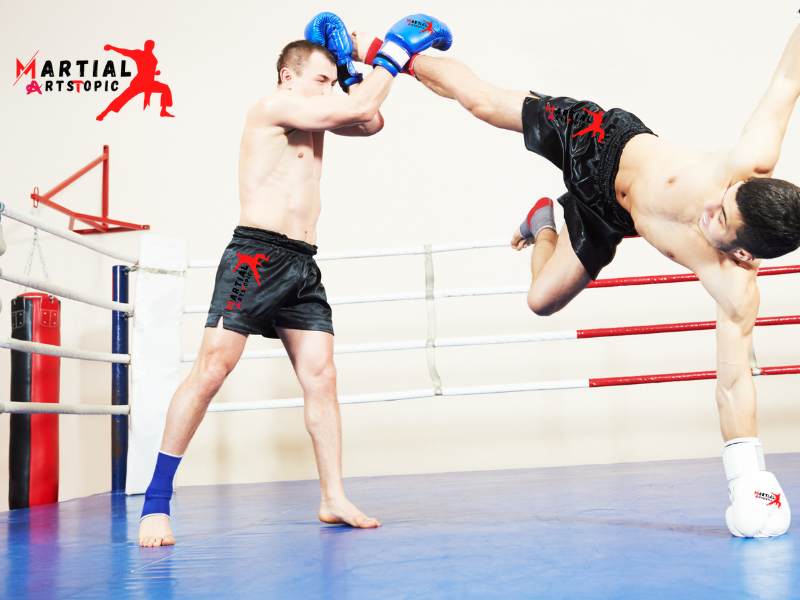
Sanda’s development was further influenced by various martial arts schools and practitioners throughout China’s history. One notable influence was the Jingwu Athletic Association, which played a significant role in promoting Sanda as a modern combat sport.
In the 1920s, the Jingwu Athletic Association organized martial arts competitions that showcased Sanda’s effectiveness as a combat sport. These competitions featured full-contact fights, where fighters could utilize strikes, kicks, throws, and takedowns. This helped establish Sanda as a distinct combat sport with its own rules and regulations.
Since then, Sanda has continued to develop and grow in popularity. It has become an integral part of modern wushu, a term used to describe various Chinese martial arts, and is practiced both as a competitive sport and as a means of self-defense and physical fitness.
In recent years, Sanda has gained international recognition, with fighters from around the world competing in professional competitions and representing their respective countries. The sport’s popularity can be attributed to its dynamic nature, which combines striking, kicking, throws, and takedowns, making it a thrilling spectator sport.
Key Principles and Techniques
Key Principles and Techniques in Sanda: Exploring Striking Techniques Sanda, also known as Sanshou, is a Chinese martial art that focuses on striking techniques and throws. It combines elements of traditional Chinese boxing (Kung Fu) with modern combat sports. In this blog post, we will delve into the key principles and techniques of Sanda, specifically focusing on striking techniques such as punches, kicks, elbows, and knees.
Striking Techniques
Striking techniques are an essential component of martial arts, encompassing a wide range of skills such as punches, kicks, elbows, and knees. These techniques are crucial for both offense and defense, requiring precision, speed, and power. Whether you’re practicing karate, Muay Thai, taekwondo, or any other martial art, mastering striking techniques is fundamental for developing effective self-defense skills and improving overall physical fitness. Understanding the proper body mechanics, footwork, and timing is key to delivering impactful strikes while minimizing the risk of injury. With dedicated practice and guidance from experienced instructors, martial artists can refine their striking techniques to achieve proficiency and confidence in their abilities.
Punches and Kicks
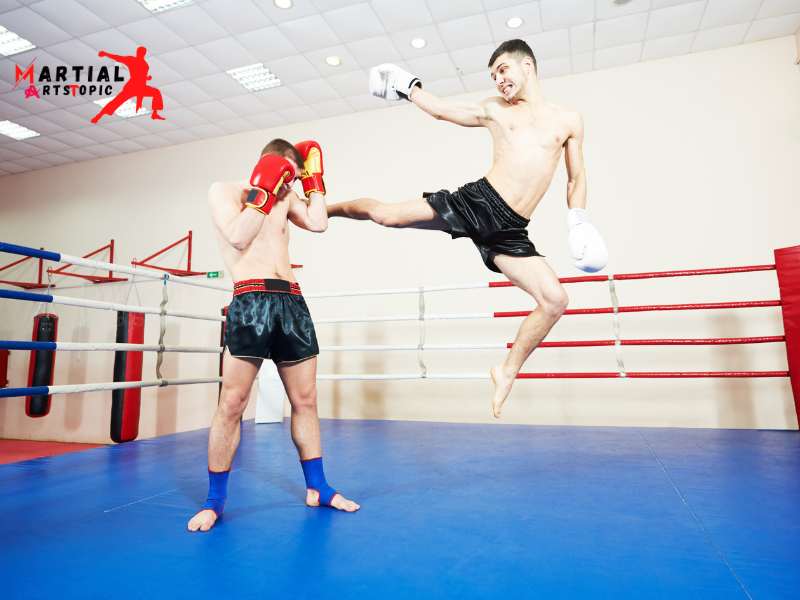
Punches and kicks are fundamental striking techniques in Sanda. They are used to initiate attacks, create openings, and defend against opponents. Proper execution of punches and kicks involves utilizing correct body mechanics, balance, and timing.
Punches in Sanda include straight punches (jab and cross), hooks, and uppercuts. I delivered these strikes with speed and precision, aiming at the opponent’s vital areas such as the head, ribs, or solar plexus. Kicks, on the other hand, involve using the legs to strike with force and accuracy. Common kicking techniques in Sanda include front kicks, roundhouse kicks, and side kicks, targeting the opponent’s legs, torso, or head.
Elbows and Knees
Elbows and knees are close-range striking techniques that are highly effective in close-quarter combat. They are used to inflict significant damage and can be devastating when executed with proper technique and power.
They can use elbows in Sanda in a variety of ways, including vertical strikes, horizontal strikes, and diagonal strikes. Vertical elbow strikes are commonly used to target an opponent’s head or collarbone, while they can aim horizontal strikes at the ribs or face. Diagonal elbow strikes are often used to attack an opponent’s temple or jaw.
Knee strikes in Sanda are particularly potent as they allow fighters to generate a tremendous amount of power from the hips and core. Knees can be used to strike an opponent’s body, thighs, or head, making them versatile tools in both offensive and defensive situations.
Grappling and throwing techniques
Grappling and Throwing Techniques: Exploring the World of Sanda If you’re a fan of combat sports, you might have heard of Sanda, a Chinese martial art that combines elements of striking and grappling. In this blog post, we’ll dive into the world of Sanda and explore two essential aspects of the sport: clinching techniques and sweeps and throws. So, let’s put on our gloves and get ready to learn!
Clinching Techniques: The Art of Close Combat
Clinching is a fundamental aspect of Sanda that allows fighters to engage in close-quarters combat. It involves various techniques to gain control over an opponent, destabilize their balance, and set up powerful strikes or throws. Here are some popular clinching techniques in Sanda:
- a. Neck Clinch: This technique involves grabbing your opponent’s neck and applying pressure to control their movement. It can be used to set up strikes or transition into throws.
- b. Collar Tie: By grabbing your opponent’s collar or neck, you can control their upper body and limit their striking options. This technique also opens up opportunities for sweeps and throws.
- c. Over hook/Under hook: These techniques involve controlling your opponent’s arm either over or under their arm. They provide leverage and control, allowing you to dictate the flow of the fight.
Sweeps and Throws: Taking Your Opponent Down
Sweeps and throws are essential techniques in Sanda, as they enable fighters to off-balance their opponents and take them down to the ground. These techniques require timing, precision, and understanding of body mechanics. Here are a few common sweeps and throws used in Sanda:
- a. Hip Throw: Also known as the “O Goshi” in Judo, the hip throw involves using your hip and leg to lift and throw your opponent over your back. It relies on leverage and momentum to execute a powerful takedown.
- b. Leg Sweep: This technique involves sweeping your opponent’s leg, causing them to lose balance and fall to the ground. They can execute it from various positions, such as a clinch or after disrupting your opponent’s stance.
- c. Shoulder Throw: Known as the “Seoi Nage” in Judo, the shoulder throw involves using your shoulder and arm to lift your opponent and throw them over your back. It requires precise timing and coordination to execute effectively.
Understanding the art of clinching and mastering sweeps and throws are crucial for any Sanda practitioner. These techniques not only allow fighters to control their opponents but also provide opportunities for powerful strikes or ground-based submissions.
Defense and counter-attacks
Defense and Counter-Attacks in Sanda: Mastering the Art of Blocking, Parrying, Evading, and Countering Sanda, also known as Chinese Kickboxing, is a martial art that combines various striking techniques with takedowns and throws. In order to excel in Sanda, one must not only possess strong offensive skills but also have a solid foundation in defense and counter-attacks. In this article, we will explore the essential aspects of Sanda’s defense, including blocking, parrying, evading, and countering.
Blocking and Parrying: The Foundation of Defense
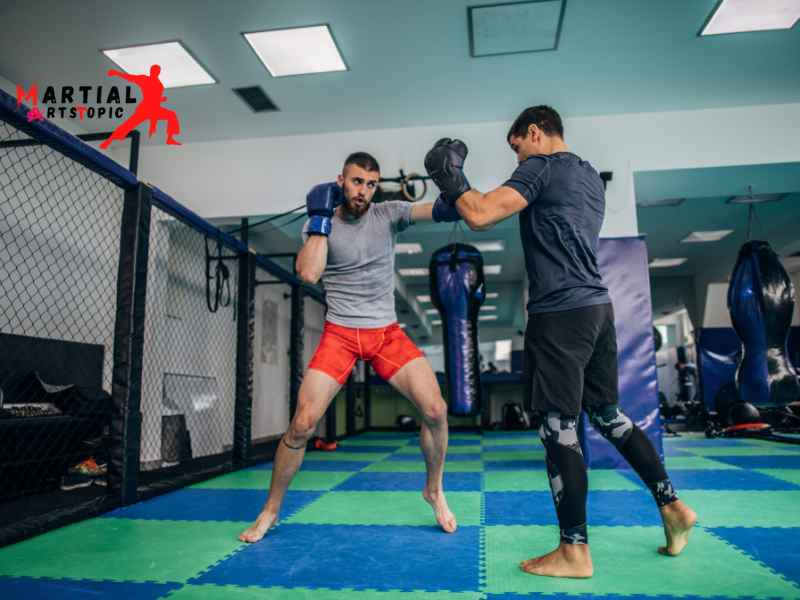
Blocking and parrying are the fundamental defensive techniques in Sanda. These techniques involve using your arms and legs to intercept or redirect your opponent’s strikes. When a punch or a kick is thrown at you, you can block it by positioning your arms or legs in its path. Parrying, on the other hand, involves deflecting your opponent’s strike to the side, opening up an opportunity for a counter-attack.
Mastering blocking and parrying requires precise timing, coordination, and awareness. By effectively blocking or parrying your opponent’s strikes, you can neutralize their attacks and reduce the chance of getting hit. This defensive tactic allows you to stay in control of the fight and sets the stage for your own counter-attacks.
Evading and Countering: The Art of Not Getting Hit
In addition to blocking and parrying, evading and countering are essential defensive strategies in Sanda. Evading involves using footwork and body movements to dodge your opponent’s strikes. By swiftly moving out of the way, you not only avoid getting hit but also create opportunities to counter-attack.
Once you successfully evade your opponent’s strike, it’s time to launch a counter-attack. This requires a combination of speed, accuracy, and timing. Countering can take the form of a punch, kick, or a takedown, depending on the situation. The key is to capitalize on the opening created by your evasion and deliver a strong and precise strike that catches your opponent off guard.
Defense and Counter-Attacks: A Seamless Combination
While blocking, parrying, evading, and countering are distinct techniques, someone should seamlessly combine them in a practical Sanda defense. A skilled Sanda practitioner must be able to transition from one defensive tactic to another fluidly, depending on the situation.
For example, if your opponent throws a punch, you can start by blocking it with your forearm, then swiftly follow up with a parry to redirect the strike. If your opponent’s kick is too fast to block, you can evade it by stepping to the side and immediately counter with a powerful kick of your own.
The key to success in Sanda defense and counter-attacks lies in constant practice and developing a keen sense of timing and anticipation. By understanding the principles behind each defensive technique and combining them effectively, you can become a formidable force in the Sanda arena.
Mastering Sanda: Tips for Effective Training
Mastering Sanda: Tips for Effective Training. Are you fascinated by the world of martial arts? Do you want to learn a combat sport that combines striking and grappling techniques in a dynamic and explosive manner? If so, then Sanda might be the perfect martial art for you.
Tips for Effective Training in Sanda
- Find a Qualified Instructor: To master Sanda, it is essential to find a qualified instructor who has experience in teaching this martial art. Look for someone who has trained in Sanda for a considerable amount of time and has a solid understanding of its techniques and principles. A skilled instructor will not only teach you the proper techniques but also ensure that you train in a safe and structured manner.
- Develop Strong Fundamentals: Like any martial art, mastering Sanda requires a firm foundation. Focus on developing your basic techniques, such as punches, kicks, knee strikes, and takedowns. Practice these techniques repeatedly to build muscle memory and improve your overall technique.
- Train for Strength and Conditioning: Sanda is a physically demanding sport that requires a high level of strength, speed, and endurance. Incorporate strength and conditioning exercises into your training routine to improve your overall fitness and performance. This can include weightlifting, cardiovascular exercises, plyometrics, and core strengthening exercises.
- Primary Footwork and Movement: Footwork plays a crucial role in Sanda. Practice moving in and out of range, circling your opponent, and maintaining a balanced stance. Develop agility and quickness in your movements to effectively evade attacks and set up your own strikes.
- Spar Regularly: Sparring is an integral part of Sanda’s training. It allows you to apply your techniques in a simulated combat situation. Regular sparring sessions will help you develop timing, accuracy, and the ability to adapt to different opponents. Always spar with a protective gear and under the supervision of your instructor.
- Focus on strategy and tactics: While Sanda requires physical prowess, it is equally important to develop strategic thinking and tactical awareness. Study your opponent’s weaknesses and strengths and formulate a game plan accordingly. Learn how to read your opponent’s movements and anticipate their next move.
- Stay Consistent and Dedicated: Mastering any martial art takes time and dedication. Be consistent with your training and maintain a disciplined approach. Set realistic goals for yourself and track your progress. Remember, progress may be slow but with perseverance, you will steadily improve.
Why Sanda Is More Than Just Kickboxing: Unveiling the Unique Elements of this Martial Art
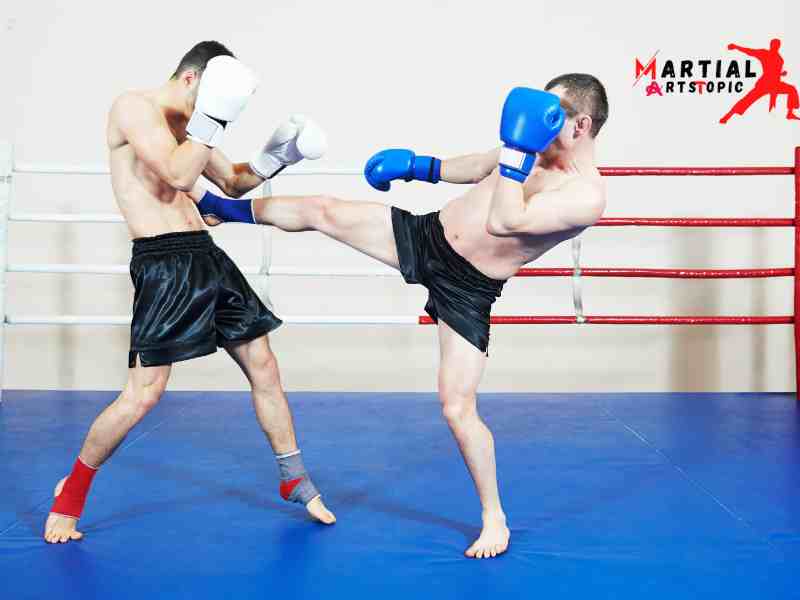
Sanda, also known as Chinese kickboxing, is a martial art that goes beyond just kicking and punching. With its unique elements and techniques, Sanda offers a comprehensive training experience that combines striking, throws, and even grappling. The reasons why Sanda is more than just kickboxing, unveiling the distinct aspects that make this martial art a standout choice for practitioners of all levels.One of the key elements that sets Sanda apart from traditional kickboxing is its emphasis on practicality and self-defense. While kickboxing primarily focuses on striking techniques, Sanda takes it a step further by incorporating throws and takedowns, making it a well-rounded martial art for real-life combat situations. By mastering Sanda, practitioners gain the ability to defend themselves effectively in various scenarios, both standing and on the ground.
Another unique aspect of Sanda is its emphasis on versatility. Unlike some martial arts that prioritize specific ranges or techniques, Sanda encourages the use of a wide range of strikes, including punches, kicks, elbows, and knees. This versatility allows practitioners to adapt to different opponents and situations, making Sanda an effective martial art for both self-defense and competitive fighting.
In addition to striking, Sanda also incorporates grappling techniques, such as sweeps, locks, and takedowns. This integration of grappling adds another layer of complexity to the martial art, providing practitioners with a well-rounded skill set that combines striking and ground fighting. Whether it’s in a self-defense scenario or a competitive match, the ability to seamlessly transition between striking and grappling gives Sanda practitioners a significant advantage.
Furthermore, Sanda places a strong emphasis on conditioning and physical fitness. The training routines in Sanda are rigorous and demanding, including high-intensity workouts, endurance training, and strength conditioning. By consistently practicing Sanda, practitioners can develop exceptional cardiovascular endurance, explosive power, and overall physical fitness. This commitment to physical training not only enhances performance in Sanda but also translates to improved fitness levels in everyday life.
Sanda’s unique blend of striking, throws, grappling, and physical conditioning makes it a highly effective martial art for self-defense, as well as a competitive sport. Whether you are looking to learn practical self-defense techniques or seeking a dynamic and challenging martial art to compete in, Sanda has something to offer.
Conclusion
What is Sanda? Sanda is much more than just kickboxing. It is a dynamic martial art that encompasses a wide range of techniques and strategies, making it a complete combat system. From its emphasis on striking and grappling techniques to its focus on practical self-defense skills, Sanda offers a unique and comprehensive approach to martial arts training. Additionally, its competitive nature and integration of traditional Chinese martial arts principles make it a fascinating discipline to study. Whether you are a beginner looking to learn self-defense or an experienced martial artist seeking to expand your skill set, Sanda has something to offer for everyone. So, if you’re looking for a martial art that combines power, agility, and versatility, look no further than Sanda.
